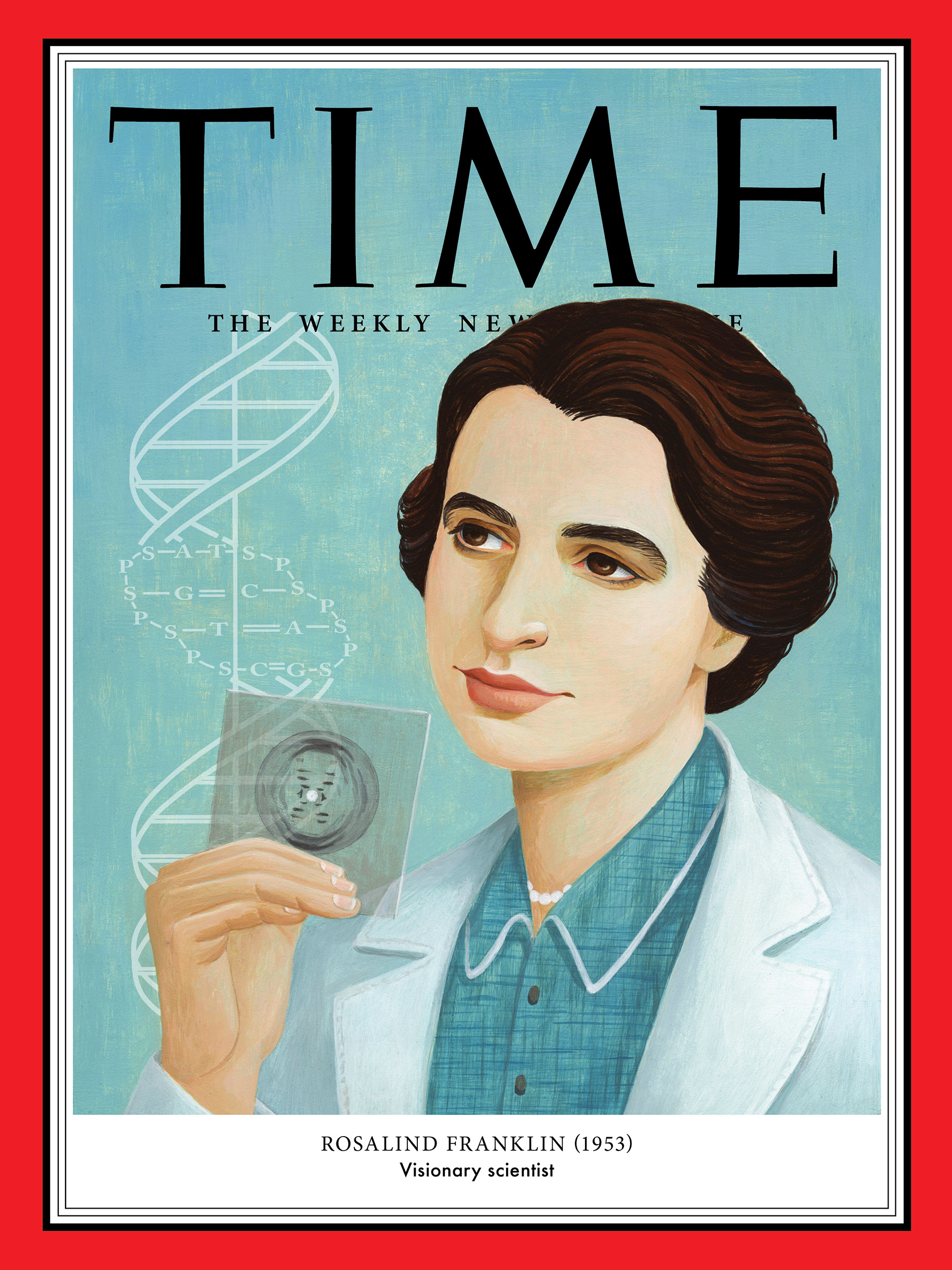Rosalind Franklin was a scientist who made a great discovery: the double helix structure of DNA. Watson and Crick, the two men also taking an interest in the project, claimed her work for their own, and she has only recently been credited with the discovery. Watson and Crick eventually won a Nobel Prize for the work, however because Rosalind died of ovarian cancer at age 37, before she was credited for the discovery, she was unable to win a Nobel Prize. Along side her PhD student, Franklin used X-ray technology to photograph DNA, which showed the molecules structure.
While this is her most famous discovery, Rosalind used her creativity to research coal and viruses, alongside DNA. Among her creative research, was also her creative approaches to thinking. Her work focused on practical innovations, things that people could actually put to use and not just exist in a scientific journal. Her research on coal allowed British troops to estimate fuel performance in their vehicles, and increase the effectiveness of soldier’s gas masks during WWII.
Rosalind Franklin also understood the importance of sharing her work with people around the world, a concept that was foreign to many scientists at the time, especially during WWII. She shared her work at international scientific conferences. A final aspect of Franklin’s creativity is the interdisciplinary nature of her discoveries. She not only worked within biology, but also chemistry, physics, and emphasized the importance of her hobbies, such as sewing, playing sports, and traveling.
As stated in Stuart Firestein’s Ted talk which we watched for class, creativity “occurs through forming links between seemingly unrelated phenomena to create something novel.” This something novel for Rosalind Franklin was knowledge. She combined aspects from science and technology in a way that had never been done before, which lead to a discovery that was foundational for our current studies on DNA and genomics.
Rosalind would be said to have intrinsic motivation. In a letter she wrote to her father, Rosalind explains that “science and everyday life cannot and should not be separated. Science, for [her], gives a partial explanation of life.” She did her work first to better understand the world around her, and second to expand this knowledge across the world.
Sources:




I think this is a fascinating way or portraying creativity. I love seeing light brought to creativity and creative methods in science. I also love how you brought light to the injustice of her not getting the credit she deserves.
ReplyDeleteRosalind Franklin was one of my biggest inspirations in high school. I feel like oftentimes the people with the most power (typically white men) take credit for other people's creative work (usually the subjugated group like people of color or women) and reap the benefits. If not or her creativity, we may not understand DNA as well as we do now.
ReplyDeleteRosalind Franklin is a pioneer and massive figure in the world of science. I really like that quote at the end, that science gives her a 'partial explanation of life'. It really puts into perspective why she continued to work as hard as she did, despite having her work stolen from her.
ReplyDeleteGreat blog post! I've always thought the story of Rosalind Franklin was interesting and she deserved more recognition. She was definitely intrinsically motivated because she cared more about the knowledge itself than any recognition.
ReplyDeleteI think you did a great job combining class material with this post, it really tied everything together. These types of stories are very common but they never fail to make me angry. I praise your efforts in continuing to make her name known as a testament to her legacy.
ReplyDeleteI remember learning about Rosalind Franklin in my high school biology class, and it's unfortunate that Watson and Crick took credit for her groundbreaking discovery. She is a big-C creative if there ever has been one, as I'm sure her research has impacted all of our lives in one way or another. It is also great to learn that she was one of the first scientists to share her work with others, which I'm sure led to advancements in other fields as well.
ReplyDelete